
A secret society is an organization about which the activities, events, inner functioning, or membership are concealed. The society may or may not attempt to conceal its existence. The term usually excludes covert groups, such as intelligence agencies or guerrilla warfare insurgencies, that hide their activities and memberships but maintain a public presence.

The National Society Daughters of the American Revolution is a lineage-based membership service organization for women who are directly descended from a patriot of the American Revolutionary War. A non-profit group, the organization promotes education and patriotism. Its membership is limited to direct lineal descendants of soldiers or others of the American Revolution era who aided the revolution and its subsequent war. Applicants must be at least 18 years of age and have a birth certificate indicating that their gender is female. DAR has over 190,000 current members in the United States and other countries. The organization's motto is "God, Home, and Country".
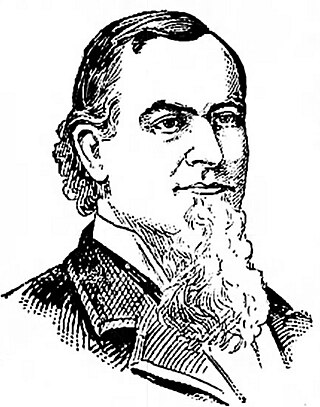
The American Protective Association (APA) was an American anti-Catholic secret society established in 1887 by Protestants. The organization was the largest anti-Catholic movement in the United States during the later part of the 19th century, showing particular regional strength in the Midwest. The group grew rapidly during the early 1890s before collapsing just as abruptly in the aftermath of the election of 1896.
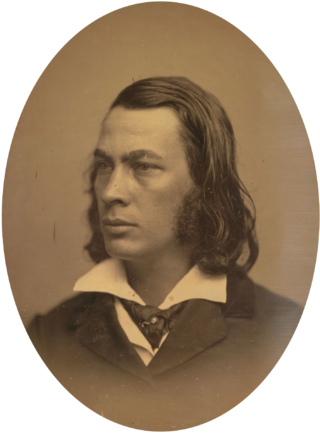
George Lippard was a 19th-century American novelist, journalist, playwright, social activist, and labor organizer. He was a popular author in antebellum America.
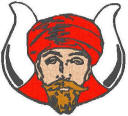
The Mystic Order of Veiled Prophets of the Enchanted Realm(M.O.V.P.E.R.), often known as "The Grotto," is a Masonic body founded in 1889 by Herman LeRoy Fairchild and the members of Hamilton Lodge in Hamilton, New York. M.O.V.P.E.R. describes itself as a "social organisation for the Master Mason." Although its members must be Master Masons, M.O.V.P.E.R. "is not and makes no claim to be a part of Symbolic Craft Masonry."

The Ancient Order of United Workmen (AOUW) was a fraternal organization in the United States and Canada, providing mutual social and financial support after the American Civil War. It was the first of the "fraternal benefit societies", organizations that would offer insurance as well as sickness, accident, death and burial policies. It dissolved in 1952.
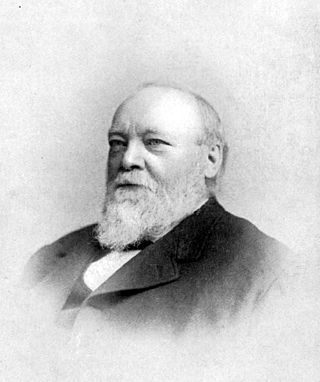
Frederick Augustus Ludwig Karl Wilhelm Genth was a German-American chemist, specializing in analytical chemistry and mineralogy.

The Daughters of America is an American secret society, Nativist organization dating from the late-19th century. It was founded in 1891 as an auxiliary of the Junior Order of United American Mechanics. Since its heyday in the 1930s, the organization is believed to have shrunk significantly, to the point that it is no longer known whether or not it still exists. As of July 2022, the organization is still active, though membership is dwindling and new membership almost nonexistent.

The Order of the Secret Monitor (OSM) is an appendant order of Freemasonry.

The Degree of Honor Protective Association is a fraternal benefit society. It was originally organized as a female auxiliary to the Ancient Order of United Workmen, but split off in 1910 to become its own independent group. It merged with Catholic Financial Life in 2017.
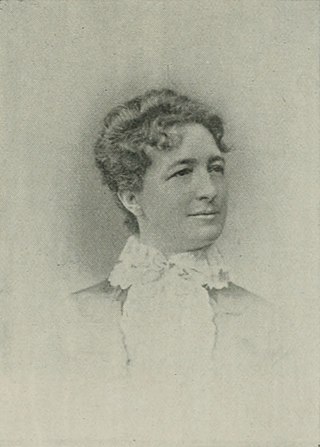
Kate Brownlee Sherwood was an American poet, journalist, translator and story writer of the long nineteenth century, as well as a philanthropist, and patron of the arts and literature. Sherwood was also the founder of the Woman's Relief Corps (WRC) and served as its second president.

Nancy H. Adsit was a 19th-century American art lecturer, art educator, and writer. A graduate of Ingham University, she contributed for half a century to art literature. Adsit was the first woman to enter the insurance field in the United States, and, as far as is known, in the world. She was possessed of an unusual combination: great literary ability and excellent business sense. At the age of 13, she assumed charge of her own affairs and her future education. Some of her early writings aroused great antagonism, and her identity was withheld by her editor. It was not until many years later that she acknowledged their authorship. On the death of her husband, Charles Davenport Adsit, of Buffalo, New York in 1873, she assumed the entire charge of his business and general insurance agency. After a very successful career in this line, she sold the business and resumed her writing. She contributed to the London Art Journal, writing an interesting series of articles for them on "The Black and White in Art" or "Etching and Engraving". This brought demands for lectures and parlor talks on art, and she began a course of classes for study. For many years, she delivered these lectures in the principal cities of the U.S., and her name was prominently connected with art education both in the U.S. and abroad. Adsit died in 1902.
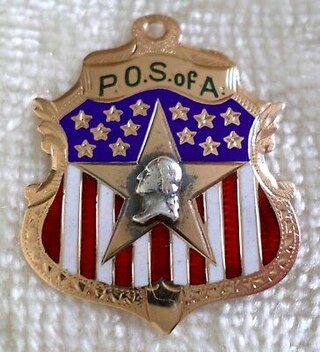
The Patriotic Order Sons of America is an American patriotic fraternal organization that traces its origins to the anti-alien riots of the 1840s. Founded in 1847 in Philadelphia, the P.O.S. of A. once had "camps" (chapters) in well over 20 states. At its peak, there were more than 800 Camps in Pennsylvania alone. Today, the society maintains a presence only in Pennsylvania, where it has 14 camps. The national headquarters are in Valley Forge, Pennsylvania.
Church Association for the Advancement of the Interests of Labor, commonly known as "CAIL", was an American Social Gospel organization founded in 1887, in New York City. It was organized by nine clergymen of the Protestant Episcopal Church. under the aegis of Bishop F. D. Huntington. From the beginning, CAIL recognized organized labor. Its declaration of principles stated that "God is the Father of all men and all men are brothers.. .. It is the duty of every man to labor diligently.. .. Labor should be the standard of social worth. When the divinely intended opportunity to labor is given to all men, one great cause of the present wide-spread suffering and destitution will be removed." The Association's official organ, Hammer and Pen, was for a long time the only church labor paper in the United States. CAIL also took an active interest in looking after the relations between the Church and the stage. The Association was one of the pioneer agencies in introducing arbitration of industrial disputes in this country and actively combated the sweat-shop system, notably in New York.
American Protestant Association was the oldest American, exclusively anti-Roman Catholic secret society. It is believed to have been the prototype of the American Protective Association. It was established at Pittsburgh, Pennsylvania, and had five degrees, which, according to the Cyclopedia of Fraternities, "in connection with the personnel of its earlier membership, point to Orange sympathies." It is probable that American Protestant associations existed as long ago as the 1844, but it is also probable that the American Protestant Association was founded in 1849, because the "forty-fifth annual convention" of the Pennsylvania State Lodge was held at its natal city in 1895. The Association was active mainly in Pennsylvania. Its members were noted for their anti-Catholic tendencies. A schism, in 1884, gave rise to the "Order of American Freeman". The "Junior American Protestant Association", modelled probably after the original "junior order," that of the Sons of America, was founded in 1864, and like the Junior Order of United American Mechanics, afterwards declared its independence of the parent society, even going so far as to change its name, in 1890, to "Loyal Knights of America". A schismatic African-American branch of the American Protestant Association was formed in Pennsylvania, in 1849, and was still in existence in 1907.

Brotherhood of American Yeomen was a coeducational North American secret fraternal benefit society organized in 1897. In 1932, the organization was changed to a mutual, legal reserve, level premium company.














